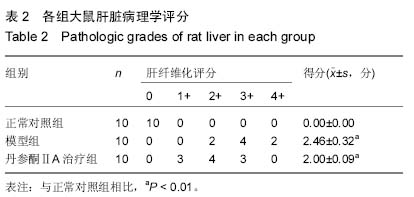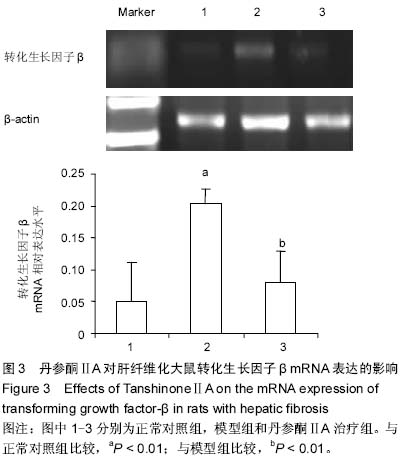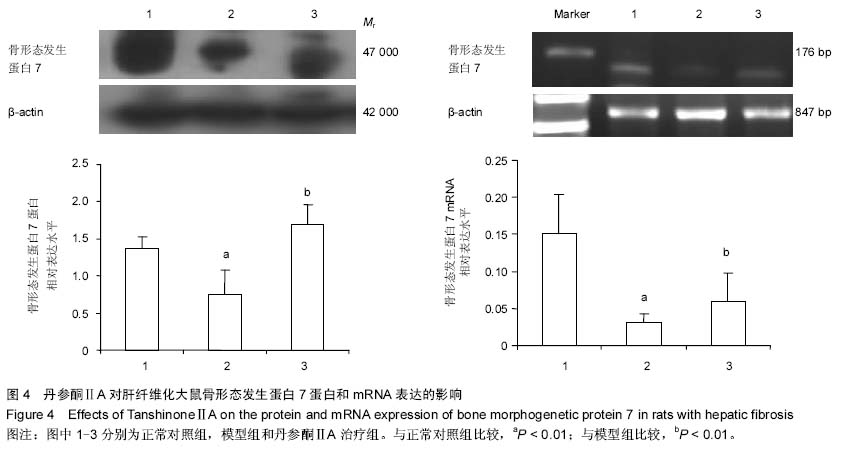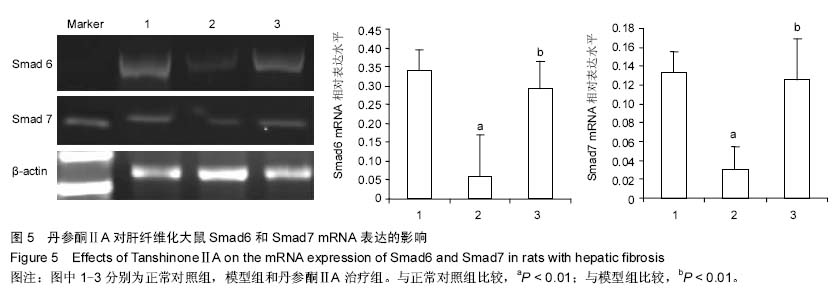| [1] Tsukada S, Parsons CJ, Rippe RA. Mechanisms of liver fibrosis. Clin Chim Acta. 2006;364(1-2):33-60.
[2] Schuppan D, Kim YO. Evolving therapies for liver fibrosis. J Clin Invest. 2013;123:1887-1901.
[3] Castera L. Assessing liver fibrosis. Expert Rev Gastroenterol Hepatol. 2008;2:541-552.
[4] Ikeda H, Yatomi Y. Autotaxin in liver fibrosis. Clin Chim Acta. 2012;413:1817-1821.
[5] Mann J, Mann DA. Transcriptional regulation of hepatic stellate cells. Adv Drug Deliv Rev. 2009;61:497-512.
[6] Miao CG, Yang YY, He X, et al. Wnt signaling in liver fibrosis: progress, challenges and potential directions. Biochimie. 2013;95:2326-2335.
[7] 张彩华,姜妙娜,李骢,等.肝复康药物血清对肝星状细胞核因子-κB及I、Ⅲ型胶原表达的影响[J].中西医结合肝病杂志,2012, 21(2):100-103.
[8] Roderburg C, Luedde M, Vargas Cardenas D, et al. miR-133a mediates TGF-β-dependent derepression of collagen synthesis in hepatic stellate cells during liver fibrosis. J Hepatol. 2013;58(4):736-742.
[9] Arauz J, Zarco N, Segovia J, et al. Caffeine prevents experimental liver fibrosis by blocking the expression of TGF-β. Eur J Gastroenterol Hepatol. 2014;26(2):164-173.
[10] Li F, Ma N, Zhao R, et al. Overexpression of miR-483-5p/3p cooperate to inhibit mouse liver fibrosis by suppressing the TGF-β stimulated HSCs in transgenic mice. J Cell Mol Med. 2014;18(6):966-974.
[11] Margoni A, Fotis L, Papavassiliou AG. The transforming growth factor-beta/bone morphogenetic protein signalling pathway in adipogenesis. Int J Biochem Cell Biol. 2012; 44(3):475-479.
[12] Lee HS, Son WC, Ryu JE, et al. Standardized salvia miltiorrhiza extract suppresses hepatic stellate cell activation and attenuates steatohepatitis induced by a methionine- choline deficient diet in mice. Molecules. 2014;19:8189-8211.
[13] Guan CW, Jin J, Li J, et al. Tanshinone IIA protects against triptolide-induced liver injury via Nrf2/ARE activation. Yao Xue Xue Bao. 2013;48(9):1397-1402.
[14] 牛雪花,华海涌,郭文建,等.丹参酮IIA磺酸钠治疗晚期血吸虫病肝纤维化的效果观察[J].中国血吸虫病防治杂志,2013,25(2): 137-140.
[15] 毛忠懿,肖敏,吴雄健,等.丹参酮ⅡA、苦参素联合治疗对慢性乙型肝炎患者肝功能及肝纤维化指标的影响[J].实用临床医学, 2014,(2):21-23.
[16] Huang W, Li L, Tian X, et al. Astragalus and Paeoniae radix rubra extract inhibits liver fibrosis by modulating the transforming growth factor-β/Smad pathway in rats. Mol Med Rep. 2015;11(2):805-814.
[17] Zhang CH, Wang YF, Chen H, et al. Protective effect of the herbal medicine Gan-fu-kang against carbon tetrachloride- induced liver fibrosis in rats. Mol med report. 2013;8(3):954-962.
[18] Lou JL, Jiang MN, Li C, et al. Herb medicine Gan-fu-kang attenuates liver injury in a rat fibrotic model. J Ethnopharmacol. 2010;128:131-138.
[19] Li CX, Luo J, Li L, et al. The collagenolytic effects of the traditional Chinese medicine preparation, Han-Dan-Gan-Le, contribute to reversal of chemical- induced liver fibrosis in rats. Life Sci. 2003;72:1563-1571.
[20] Dijksterhuis JP, Petersen J, Schulte G. WNT/Frizzled signaling: receptor-ligand selectivity with focus on FZD-G protein signaling and its physiological relevance. Br J Pharmacol. 2014;171(5):1195-1209.
[21] Watson MR, Wallace K, Gieling RG, et al. NF?kappaB is a critical regulator of the survival of rodent and human hepatic myofibroblasts. J Hepatol. 2008;48:589?597.
[22] Ji L, Xue R, Tang W, et al.Toll like receptor 2 knock-out attenuates carbon tetrachloride (CCl4)-induced liver fibrosis by downregulating MAPK and NF-κB signaling pathways. FEBS Lett. 2014;588(12):2095-2100.
[23] Tang LX, He RH, Yang G, et al. Asiatic acid inhibits liver fibrosis by blocking TGF-beta/Smad signaling in vivo and in vitro. PLoS One. 2012;7(2):e31350.
[24] Xu TT, Jiang MN, Li C, et al. Effect of Chinese traditional compound, Gan-fu-kang, on CCl(4)-induced liver fibrosis in rats and its probable molecular mechanisms. Hepatol Res. 2007;37:221-229.
[25] Zeng S, Chen J, Shen H. Controlling of bone morphogenetic protein signaling. Cell Signal. 2010;22(6):888-893.
[26] Nishinakamura R, Sakaguchi M. BMP signaling and its modifiers in kidney development. Pediatr Nephrol. 2014;29(4):681-686.
[27] Zeisberg M, Kalluri R. Reversal of experimental renal fibrosis by BMP7 provides insights into novel therapeutic strategies for chronic kidney disease. Pediatr Nephrol. 2008;23(9): 1395-1398.
[28] Freedman BI, Bowden DW, Ziegler JT, et al. Bone morphogenetic protein 7 (BMP7) gene polymorphisms are associated with inverse relationships between vascular calcification and BMD: the diabetes heart study. J Bone Miner Res. 2009;24(10):1719-27.
[29] Weiskirchen R, Meurer SK.BMP-7 counteracting TGF-beta1 activities in organ fibrosis. Front Biosci (Landmark Ed). 2013; 18:1407-1434.
[30] 何培元,王明娟,张聪,等.BMP-7/Smad6信号通路在酒精性肝损伤大鼠模型中的调节作用[J].临床和实验医学杂志,2014,13(17): 1393-1396.
[31] Zimmermann A. Regulation of liver regeneration. Nephrol Dial Transplant. 2004;19(Suppl 4):S6-S10.
[32] Cutroneo KR. TGF-beta-induced fibrosis and SMAD signaling: oligo decoys as natural therapeutics for inhibition of tissue fibrosis and scarring. Wound Repair Regen. 2007;15 Suppl 1: S54-S60. |






.jpg)